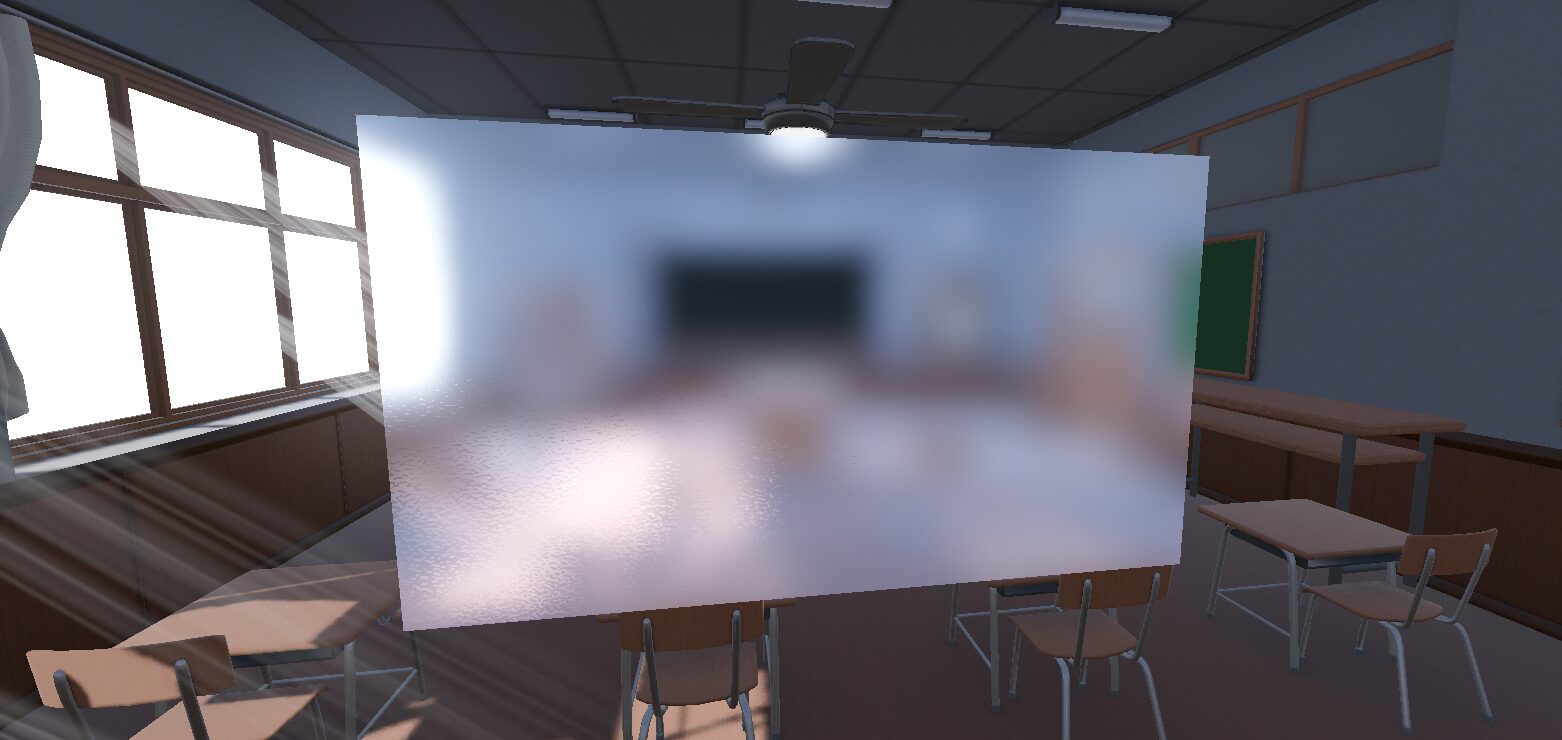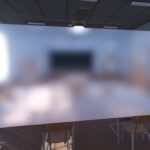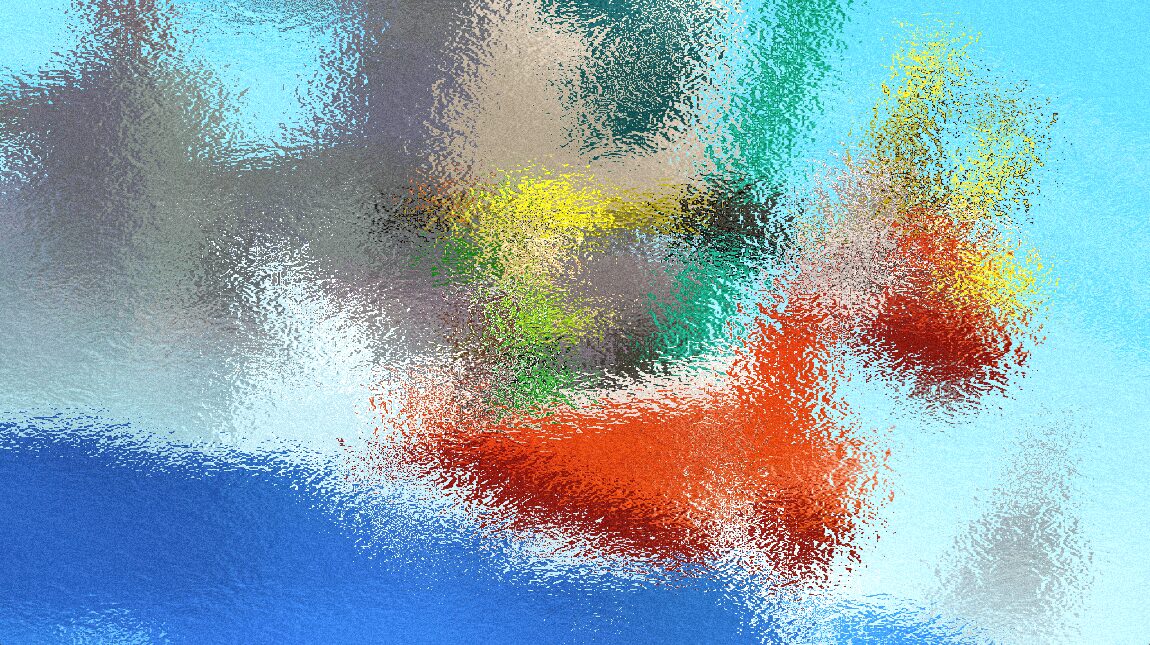Frosted Glass
This is a frosted glass shader using a bi-cubic function for the blur effect + an optional frosted texture that you can provide to add a bit of a frosty effect.
Shader code
shader_type spatial;
uniform sampler2D screen_texture : hint_screen_texture, filter_linear_mipmap; // Captures the screen texture
uniform sampler2D frosted_texture : source_color, repeat_enable; // Your frosted glass texture for distortion
uniform int lod_level : hint_range(0, 10) = 4; // Base blur level
uniform float brightness : hint_range(0.0, 100.0) = 1.0; // Brightness adjustment
uniform float distortion_intensity : hint_range(0.0, 0.1) = 0.02; // Strength of distortion
// w0, w1, w2, and w3 are the four cubic B-spline basis functions
float w0(float a) {
return (1.0f / 6.0f) * (a * (a * (-a + 3.0f) - 3.0f) + 1.0f);
}
float w1(float a) {
return (1.0f / 6.0f) * (a * a * (3.0f * a - 6.0f) + 4.0f);
}
float w2(float a) {
return (1.0f / 6.0f) * (a * (a * (-3.0f * a + 3.0f) + 3.0f) + 1.0f);
}
float w3(float a) {
return (1.0f / 6.0f) * (a * a * a);
}
// g0 and g1 are the two amplitude functions
float g0(float a) {
return w0(a) + w1(a);
}
float g1(float a) {
return w2(a) + w3(a);
}
// h0 and h1 are the two offset functions
float h0(float a) {
return -1.0f + w1(a) / (w0(a) + w1(a));
}
float h1(float a) {
return 1.0f + w3(a) / (w2(a) + w3(a));
}
vec4 texture2D_bicubic(sampler2D tex, vec2 uv, int p_lod, ivec2 tex_size) {
vec2 tex_size_lod = vec2(tex_size >> p_lod);
vec2 pixel_size = vec2(1.0f) / tex_size_lod;
uv = uv * tex_size_lod + vec2(0.5f);
vec2 iuv = floor(uv);
vec2 fuv = fract(uv);
float g0x = g0(fuv.x);
float g1x = g1(fuv.x);
float h0x = h0(fuv.x);
float h1x = h1(fuv.x);
float h0y = h0(fuv.y);
float h1y = h1(fuv.y);
vec2 p0 = (vec2(iuv.x + h0x, iuv.y + h0y) - vec2(0.5f)) * pixel_size;
vec2 p1 = (vec2(iuv.x + h1x, iuv.y + h0y) - vec2(0.5f)) * pixel_size;
vec2 p2 = (vec2(iuv.x + h0x, iuv.y + h1y) - vec2(0.5f)) * pixel_size;
vec2 p3 = (vec2(iuv.x + h1x, iuv.y + h1y) - vec2(0.5f)) * pixel_size;
return (g0(fuv.y) * (g0x * textureLod(tex, p0, float(p_lod)) + g1x * textureLod(tex, p1, float(p_lod)))) +
(g1(fuv.y) * (g0x * textureLod(tex, p2, float(p_lod)) + g1x * textureLod(tex, p3, float(p_lod))));
}
void fragment() {
// Get the original UV coordinates
vec2 screen_uv = SCREEN_UV;
// Use the frosted texture for distortion
vec2 distortion = texture(frosted_texture, UV).rg - 0.5; // Center distortion values around 0
distortion = normalize(distortion) * distortion_intensity; // Normalize to prevent stretching
// Apply the distortion to the UV coordinates
vec2 distorted_uv = screen_uv + distortion;
// Sample the screen texture with the distorted UV and specified LOD level
vec4 blurred_color = texture2D_bicubic(screen_texture, distorted_uv, lod_level, textureSize(screen_texture, 0));
// Adjust the brightness of the blurred color
vec3 adjusted_color = blurred_color.rgb * brightness;
// Apply the adjusted color to the fragment
ALBEDO *= adjusted_color;
// Optional: Preserve the original alpha of the blurred screen texture
ALPHA = blurred_color.a;
}






